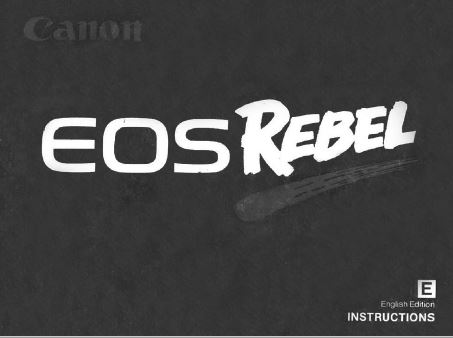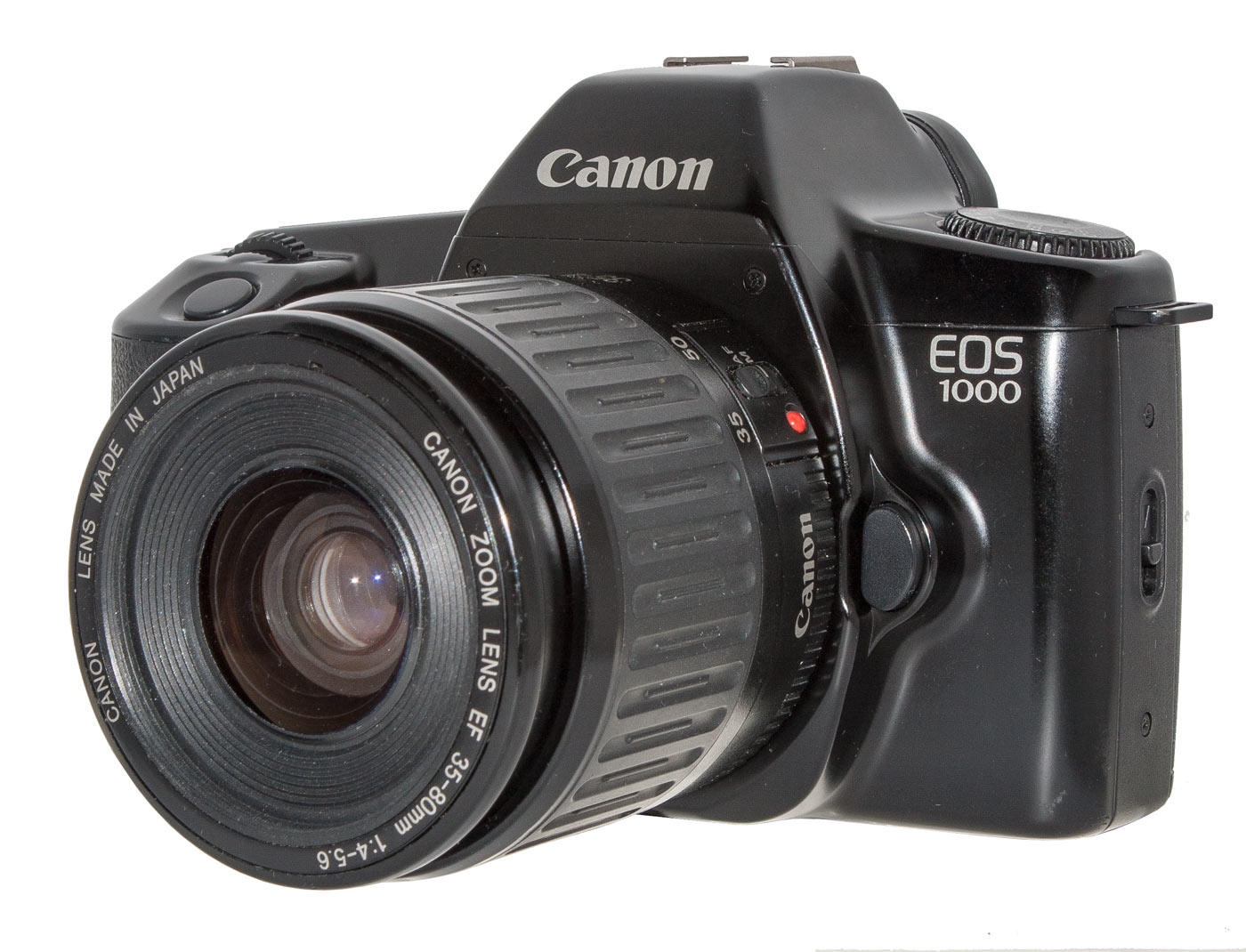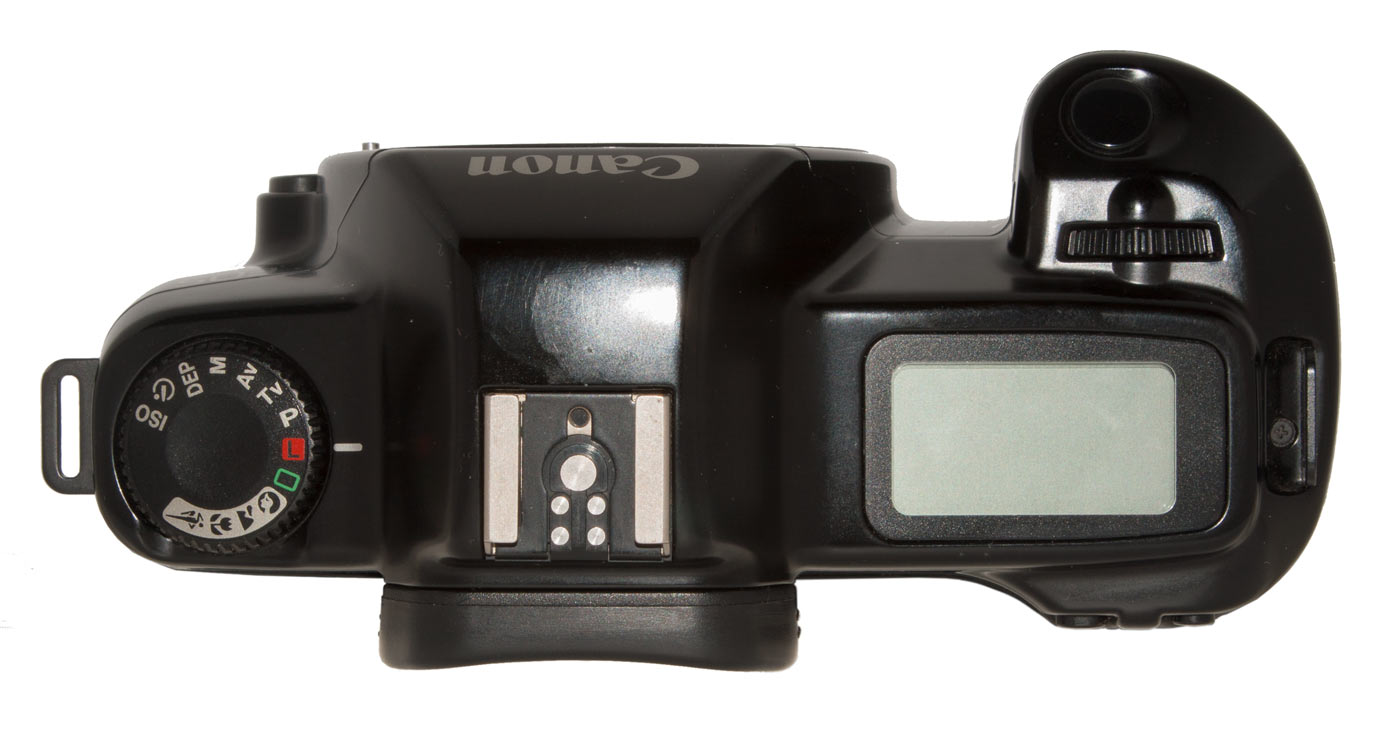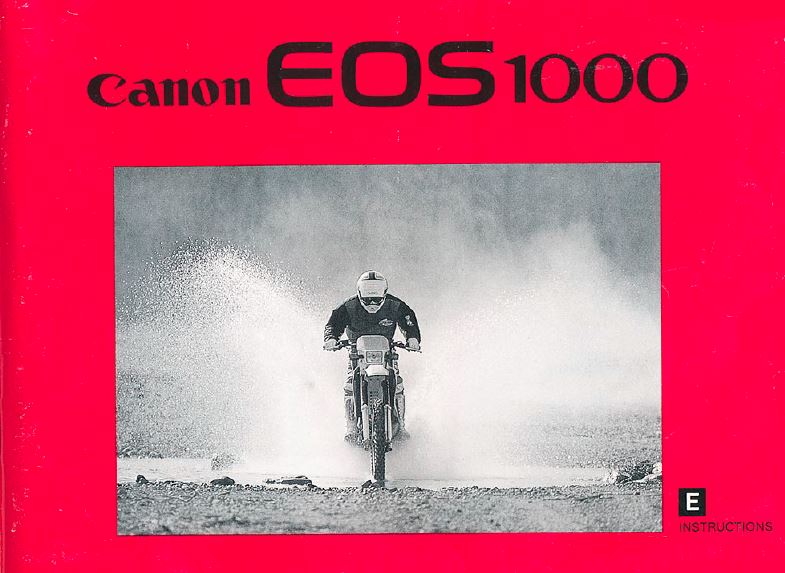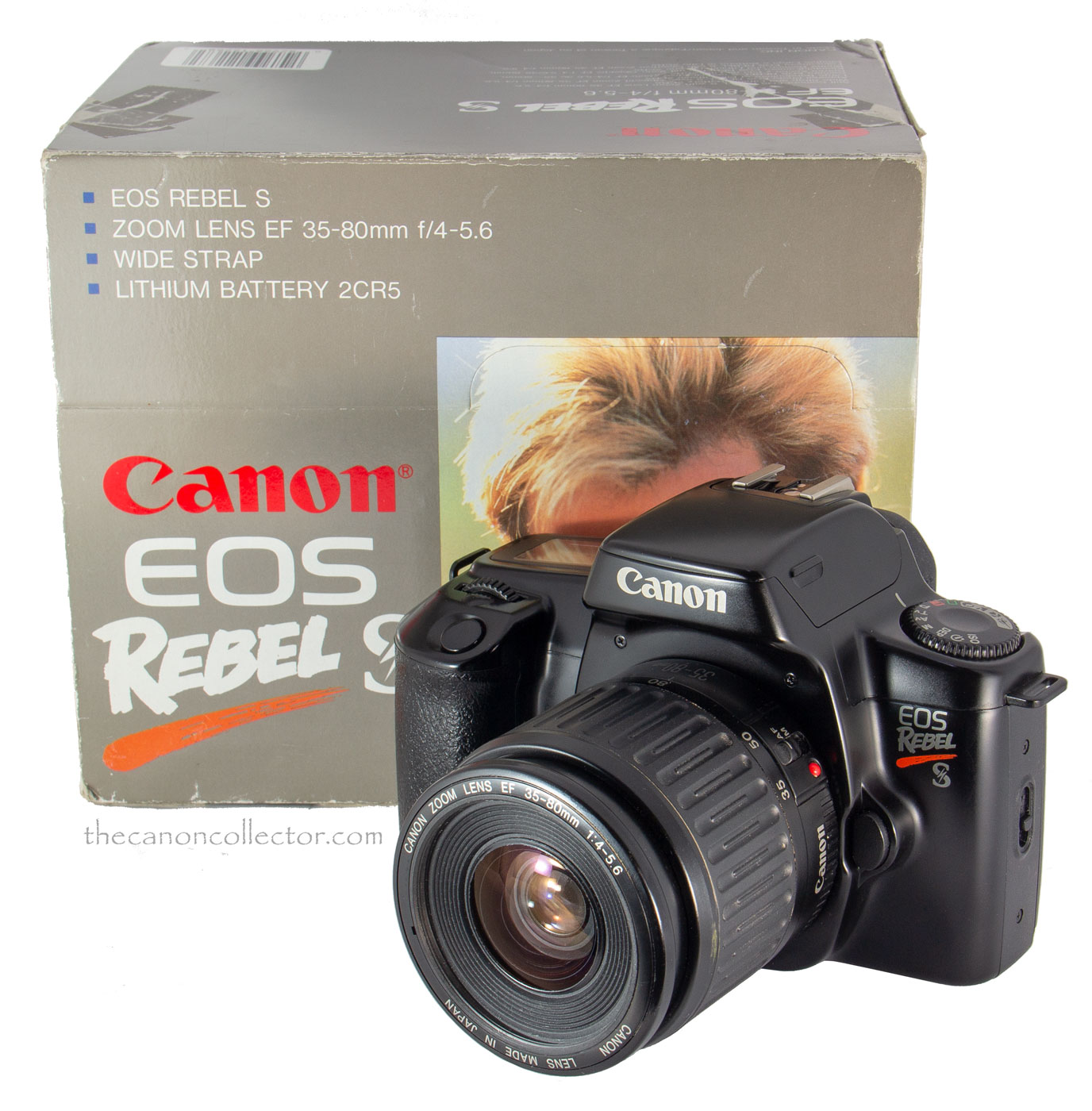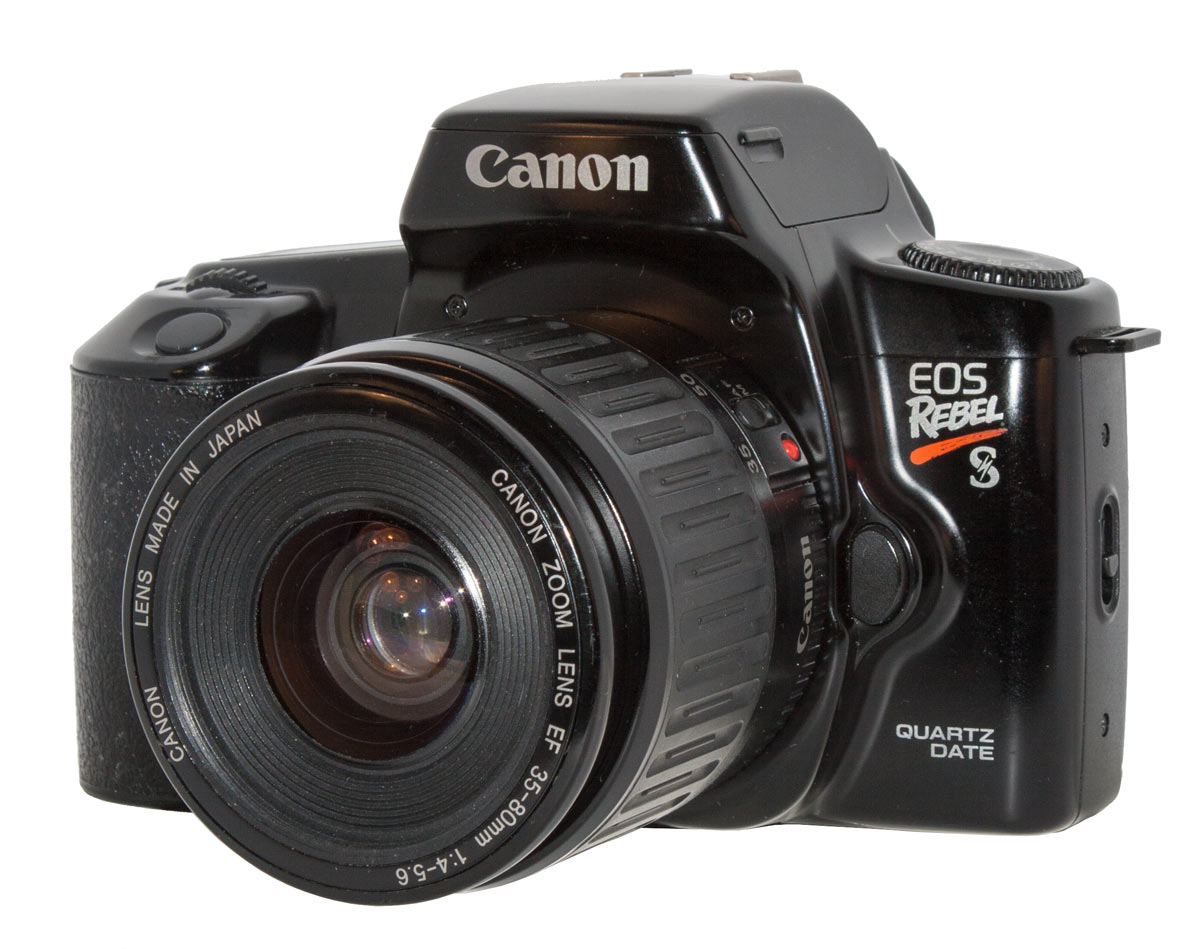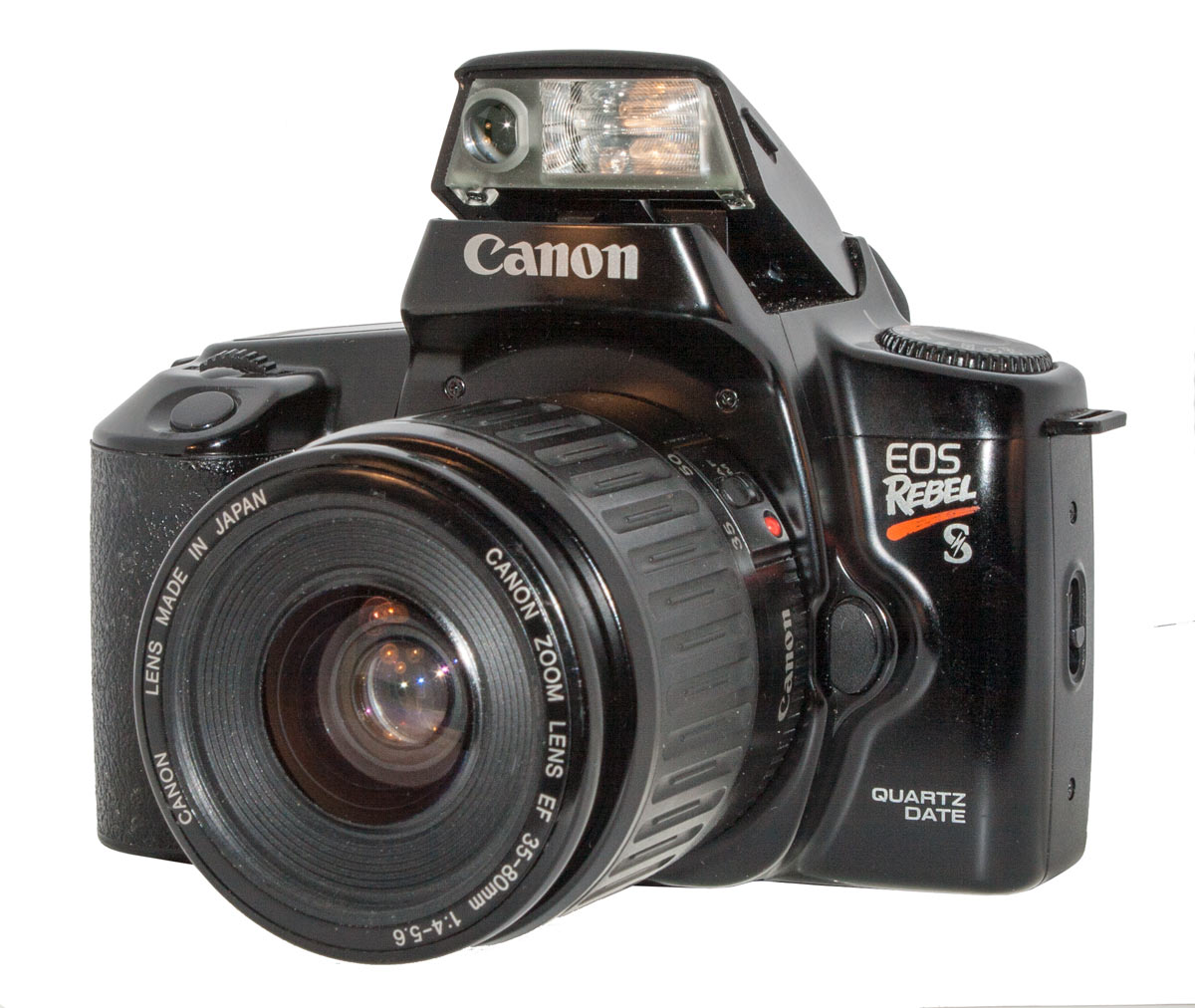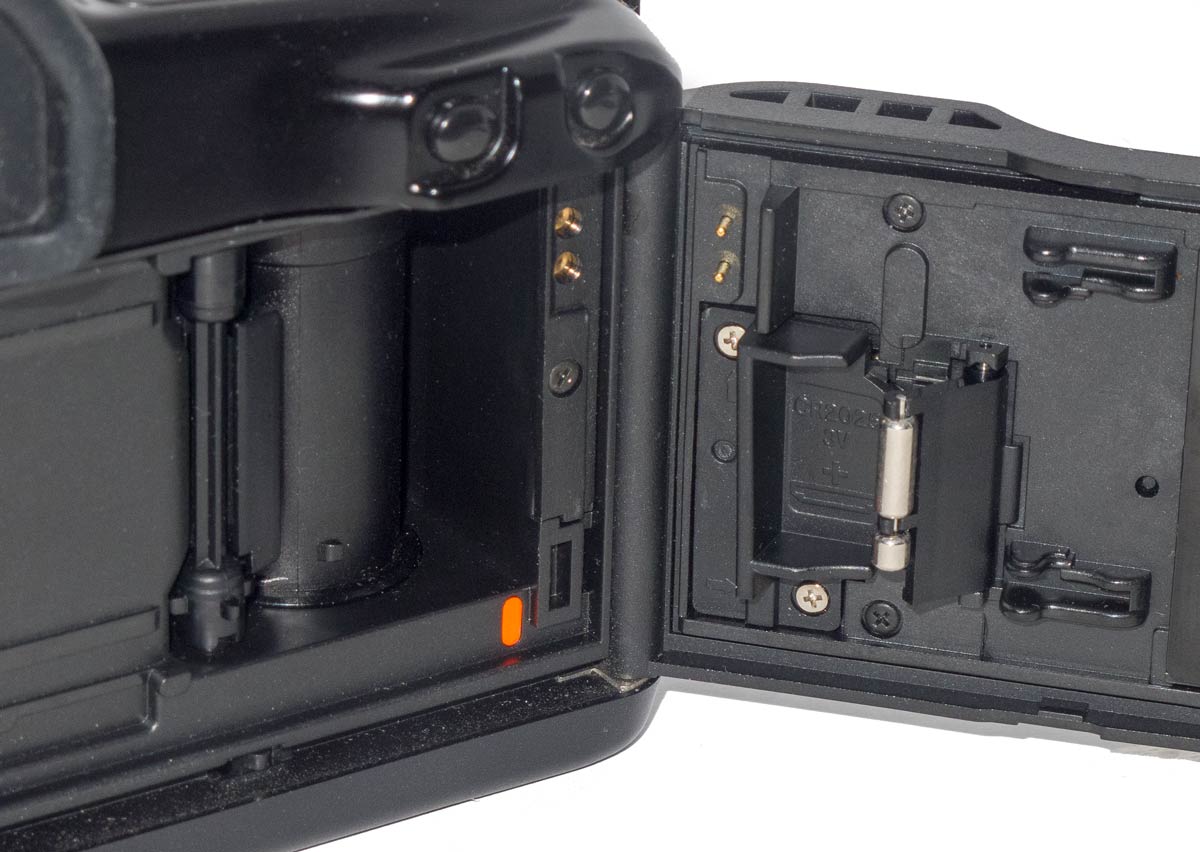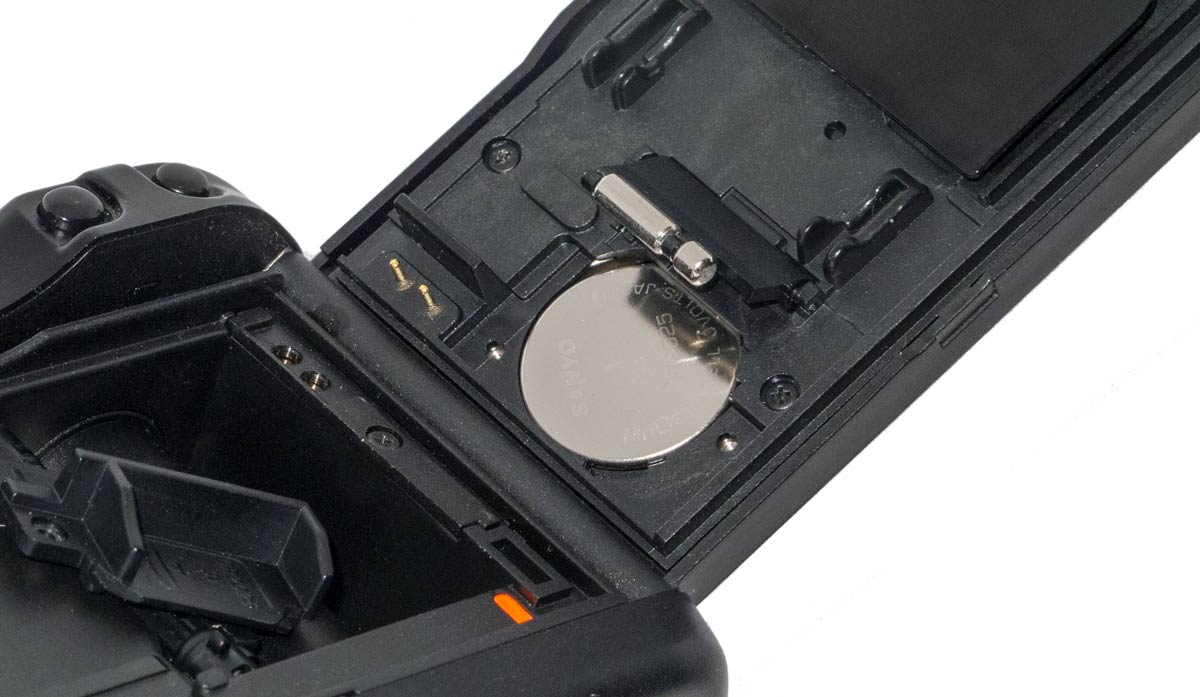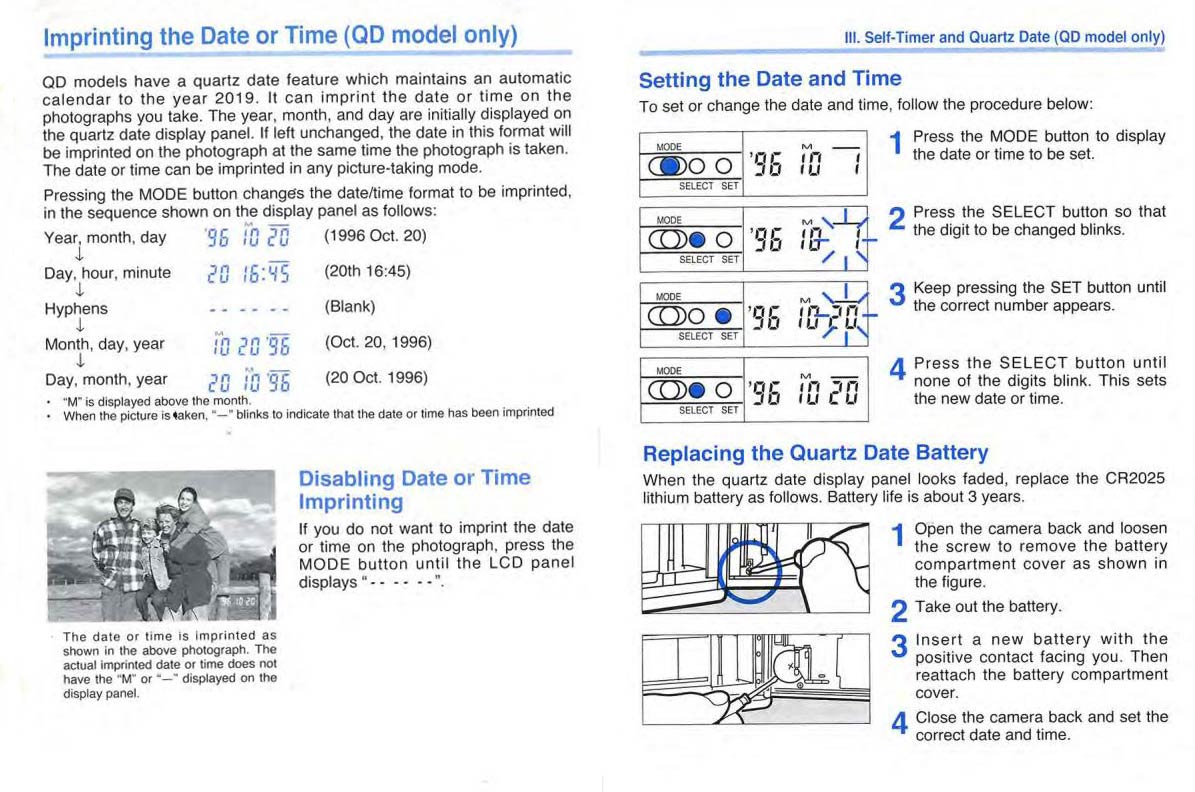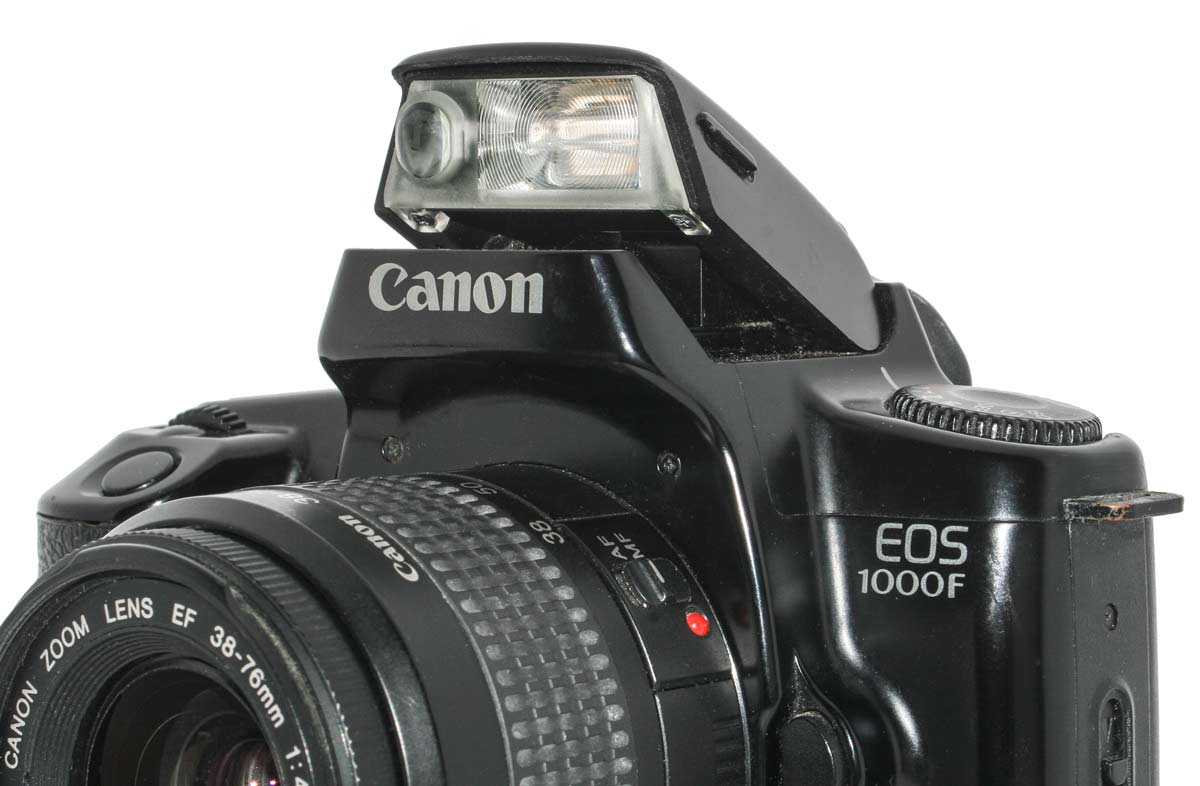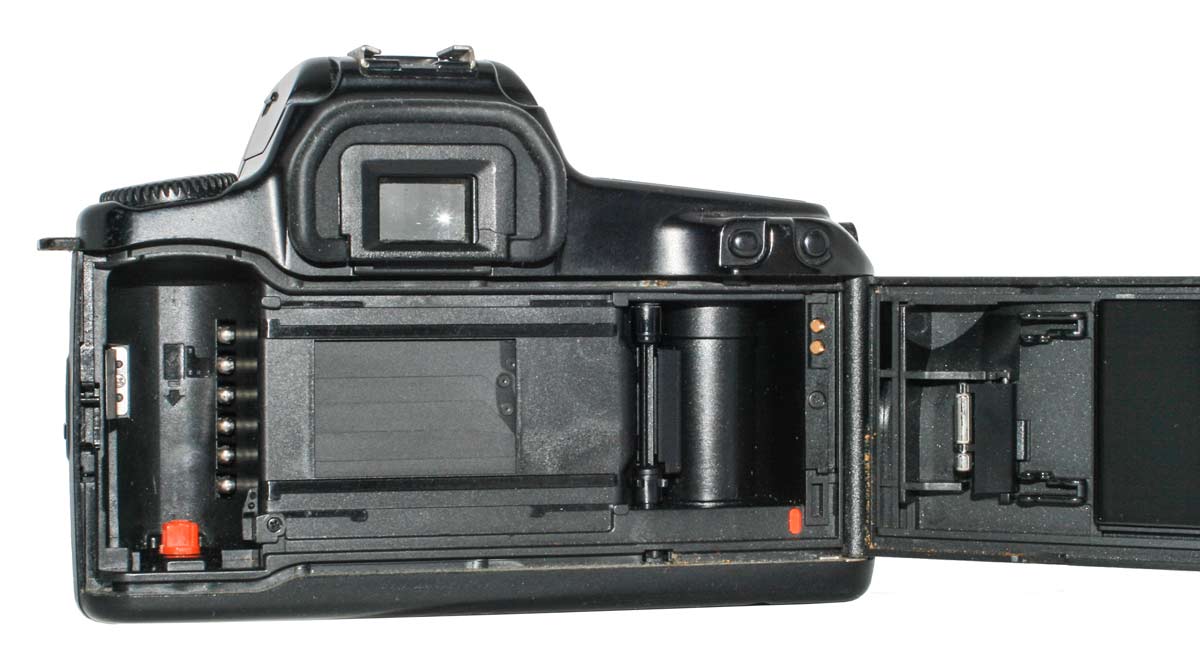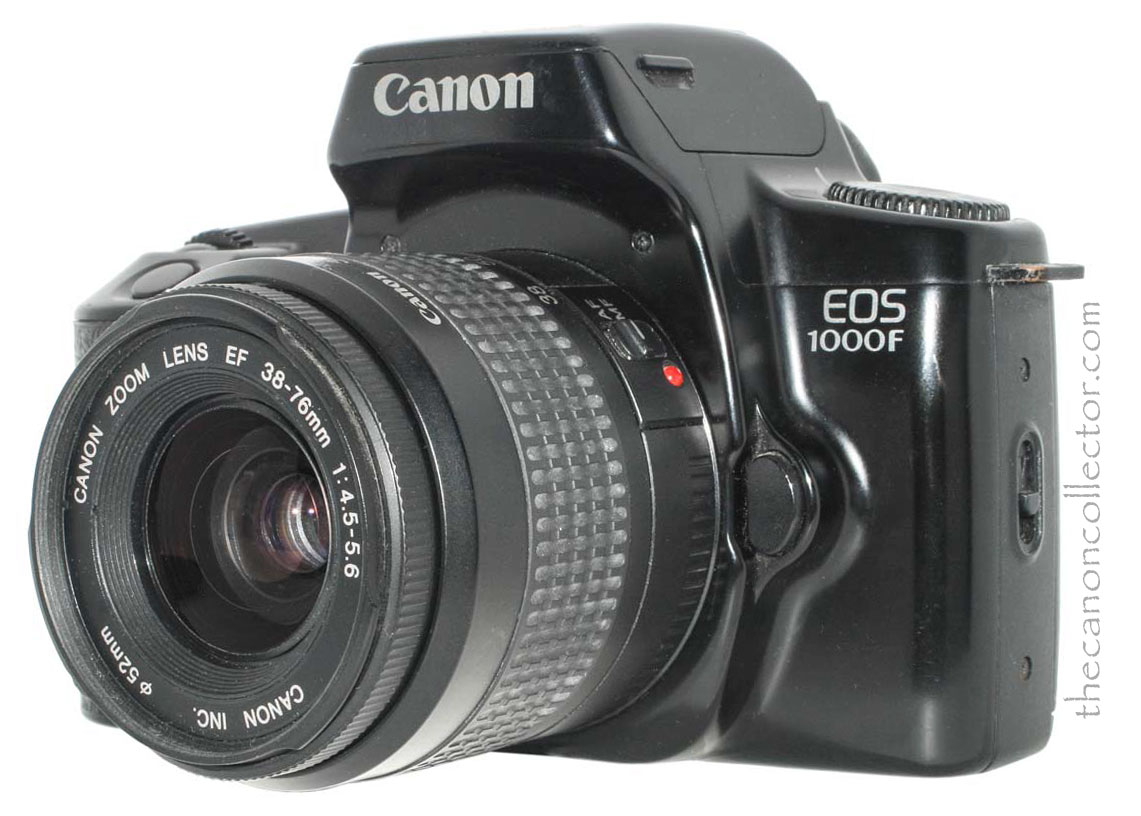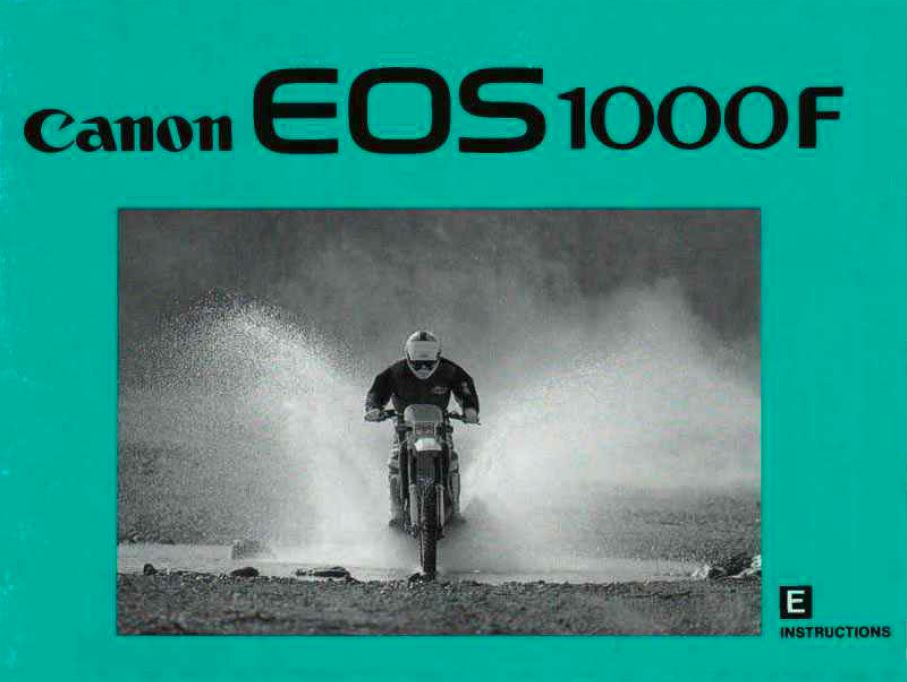This is my Rebel, Serial Number 1327528, with an EF 35-80mm 1:4-5.6 lens. The body and lens mount are plastic and the controls are what you would expect on any modern digital camera.
The Rebel makes extensive use of plastic and even the lens mounting ring is plastic. Although there are more features, this camera is lighter than the EOS 850 or 700.
The top deck layout should be familiar to any modern camera shooter. The Mode Dial on the left sets the shooting mode. The Main Dial above the shutter button sets variable paramenters and the LCD shows the settings.
EOS Rebel
The First of a Great Lineage
The EOS 750/850 introduced in October of 1988 began the EOS “Entry Level” camera line. It was a simple camera with a single automatic setting. Essentially it was an EOS Point and Shoot camera. Then came the 700 in March of 1990. This was a step up with a camera offering multiple preset settings and the ability, albeit awkwardly, to work in Shutter Priority mode. More control but less than convenient. And then came the Rebel.
The first Rebel camera, also called the EOS 1000 in Europe, was introduced in October of 1990 and its progeny are still with us 30 years later. Of course it was a film camera to begin with but successfully made the jump to digital a few years later.
A user of a modern digital Canon camera would be right at home with this Rebel. It has a large LCD screen on the top deck right side and the wheel above the shutter button makes its first appearance. The User Instructions calls it the Electronic Input Dial. Later Manuals call it the Main Dial or other names. On the left side is the Mode Dial on which the user can select one of six preset modes as well as Aperture or Shutter priority or Manual modes. Does all this sound familiar? It should.
This first Rebel is very much a modern camera. Many of the features are slower or less sensitive than today’s cameras but they are there. And shooting it is a very familiar experience. Film loading is almost automatic. The camera will read DX codes and set the ISO for you or you can set it yourself between ISO 6 and 6400. Once the camera back is closed the film winds out of the cassette completely and then winds back in a frame at a time as the film is used.
The shutter is metal and travels vertically. The speeds are electronically controlled between 30 seconds and 1/1000th of a second.
Taking pictures is very like a digital experience except there is no image review after the shot is taken. Film advance is almost instantaneous and not overly loud.
As an added bonus the camera will take all of the EOS line of lenses. It will even mount the latest L series lenses of any focal length. For shooting film it is a luxury experience.
Inside the film chamber on the left are the contacts for reading the DX code. Note the metal vertical travelling shutter curtain.
EOS 1000
The European Rebel
The first Rebel was so named for the Americas. In Europe it was called the EOS 1000. Same camera but different name.
It is interesting that comments I read concerning this camera seem to get it confused with other models. It is simply the EOS 1000. It has no other letters or numbers. It is not a QD. It is just plain 1000. Looking at the pictures you will see that it is simply the EOS Rebel in every detail.
There are apparently a Rebel QD and an EOS 1000 QD but to this point I have not acquired them. But, as Scarlet said, tomorrow is another day.
EOS Rebel S
The Flashy Rebel
I am assuming that “S” stands for strobe. The Rebel S is the Rebel camera with a built in strobe flash. No other differences.
Flash photography is totally simple: if the “flash indicator” in the viewfinder is flashing it means there is not enough light and you need the strobe. Gently pull it up and take your picture. When finished you push it back into the stowed position.
EOS Rebel S QD
The Flashy Rebel with a Data Back
The Rebel and the EOS 1000 were both available with Data Backs that would iprint Date or Time on the edge of the image area. This was true also for the Rebels with the pop up flash, the Rebel S and EOS 1000F. The backs were powered independently of the camera itself with a coin type CR 2025 3 volt battery. This battery was accessed via a s small plate on the indise of the back secured by two small screws. If you do not intend to use the camera, remove this battery, as well as the main 2CR5, to avoid a battery leaking and corroding the camera.
Date and time are set on the outside of the Data Back. There are three buttons and a small LCD screen to accomplish this. If the LCD is left blank then nothing will print on the film.
The Rebel S and Rebel S QD are identical from the front except for the small “Quartz Date” printed near the bottom ight in the picture. The flash, shown up in this image, is identical in both cameras.
At the top of the Data Back hinge on the Data Back are two electrical pin contacts that touch the two round contacts on the camera body when the back closes. This carries shutter data to the back.
The screw drive points to one of two silver screws that hold the CR2025 battery compartment door closed. To replace the battery these screws are removed to get at the battery.
The European Flasher
The Rebel S was marketed in the Americas but the same camera was called the EOS 1000F in EUrope and Asia. In all respects it is the same camera as the Rebel S.
The flash unit on the 1000F is opened manually by grasping the tabs on each side of the housing and pulling up. When finished, it is pushed down till it latches.
Note the two round electrical contacts at the top of the back hinge. All Rebel bodies appear to be ready for the Data Back.
And so, In Conclusion …..
We began looking at the Canon Rebel camera and found it to be a family of cameras. It can be a bit confusing so let’s summarize.
First there is the Rebel. In Europe and Asia it is called the EOS 1000. Same Camera.
These cameras came in a flash version. These were the Rebel S and the EOS 1000F.
And all of these came with a Data Back version; the Rebel QD, Rebel S QD, EOS 1000 QD and the EOS 1000F QD.
And finally, released in Japan, there was an EOS 1000 QD-P. The P stands for the Panorama feature that is, to my thinking, a silly gimmick.
So there you are: the Rebel family. 9 cameras that are essentially the same with varying additional features.
This website is the work of R. Flynn Marr who is solely responsible for its contents which are subject to his claim of copyright. User Manuals, Brochures and Advertising Materials of Canon and other manufacturers available on this site are subject to the copyright claims and are the property of Canon and other manufacturers and they are offered here for personal use only.








